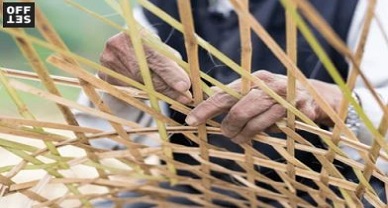Traditional Knowledge and Trade Secrets
Introduction
In the forests of Kerala, certain members of the Kani tribe were knowledgeable about a magnificent healing herb known as Jeevani. In 1987, a team of scientists approached the tribe to know about the secret plant with healing properties. The Kathis, the custodian of the traditional knowledge was initially reluctant to tell them the name of the plant but the scientists were finally led to the plants. Subsequently, the scientists worked on the plant and developed a patented medicine. They entered into an Access Benefit Sharing agreement under which a fund was set up for the benefit of the Kani people. In this case, the Kani people had to diverge from the custom of secrecy and while this divergence, brought about economic benefits. There could be alternative and arguably better alternatives for the same.
A group of North American indigenous communities, the Tulalip Tribes, have an international application under the Patent Cooperation Treaty (PCT) on the use of traditional Chinese medicine (TCM) to reduce the level of fat in blood, which claims an invention that combines teaching of TCM with modern medicine to developed Story base, a digital collection of their TK. A part of TK is exposed for patent review whereas the rest is kept undisclosed. Similarly, Ecuador has developed a unique system of providing id cards to authorised shamans. People can go to Shamans with the id-card and be assured about a standard quality of service. This way Shamans do not have to reveal their ingredients to outsiders, and yet commercialise their trade.
[Image Sources : Shutterstock]
The author hints that maintaining the secrecy of traditional knowledge held by communities may be better suited for certain communities in the longer run. For the context of this article, traditional knowledge also encompasses traditional cultural expressions. Further, maintaining the secrecy of traditional knowledge is also aligned with the customs or viewpoints held by indigenous communities. For the Shamans of Ecuador, the medicinal knowledge they have is derived from their deep connection to their tribal land and recording such traditional knowledge will never truly capture their connection with their land and they may not it worked.
Patent laws fail to protect traditional knowledge as it does not recognise generation innovation. Today while the ABS tries to support traditional knowledge, the number of benefits reaped by the communities remains questionable.
In case of copyright, the copyright often belongs to one who records the traditional knowledge who may be an outsider to the community, in such cases the community has little power over how they are portrayed. For example, Rev. Reverend Heinrich R. Voth, was allowed to witness and photograph sacred ceremonial dances as part of his study of the Hopi religion and culture. Such photography remains generally forbidden even today. Disputes over the scope of the oral understanding regarding the use of the photographs taken, including in particular Reverend Voth’s right to publish them, and the extent to which the Hopis actually agreed to have such practices recorded by an outsider remaining unanswered.
Even a WIPO guide on recording traditional knowledge talks about empowering communities to write their own traditional knowledge, and provide limited access to the recorded documents in order to preserve secret traditional knowledge. Furthermore, trade secrets can solve other issues associated with copyright and patent protection which makes it inapplicable to traditional knowledge.
Collective ownership: In case TK is protected under trade secrets there is no requirement of specific right holder and the community is deemed to have collective personality.
Perpetual ownership: Patent and copyright both have a limited period of protection, after which the traditional knowledge falls into the public domain. However, traditional knowledge has belonged to a community for generation and will continue to do so in the future. With protecting their TK as trade secrets, the community at aim as perpetual ownership.
Further, while patent and copyright have strict brackets on what it pertains to, many forms of traditional knowledge may not strictly conform to it. For example, in case of an herb used for healing, patent application will focus on the benefit of the herb. But the use of the herb for healing maybe supplemented by prayer which the community may believe to be inherent to the healing process but cannot be patented. Unlike patent and copyright, trade secret has no particular confines about its domain and it may be able to protect traditional knowledge in its entirety.
Commercial Viability
It is perhaps the most important criteria for considering something as a trade secret. Depending on its nature, traditional knowledge may or may not be commercially viable. Medicinal traditional knowledge or indigenous methods of production have commercial viability and may in fact even prove useful as the current patent regime does not recognise generational innovation and keeping it a trade secret helps community commercialise it. A good example of this is the Shaman practitioners of Ecuador.
On the other hand, TCEs are usually not considered to be commercially viable. In Religious Technology Center v. Wollersheim, A US court refused to grant an appeal to grant an unauthorized dissemination of certain scriptural materials access to which was restricted by the Church of Scientology for reasons of spiritual development. The plaintiff claimed that their trade secret was breached due to the unauthorised dissemination of information. According to a researcher, courts may reject traditional knowledge as trade secret as traditional knowledge many not convey an actual or potential commercial advantage, presumably measurable in dollar terms.
While even certain communities may want to hold on to their practices in secrecy not for commercial motive but due to customs or sentimental reasons. In those cases, courts typically grant relief to communities under the banner of cultural privacy if there has been an unauthorised disclosure of their traditional knowledge.
Conclusion
It is clear that there are inherent difficulties in finding a legal remedy for traditional knowledge holders who wish to rely on secrecy to protect traditional knowledge. While it may seem lucrative at first, it is very difficult to put traditional knowledge under the confines of trade secrets. Further, given that it is highly unlikely that there will be any legislative reform of this
area generally, there is even less hope that there will be an intervention to deal with secret traditional knowledge. To the extent that it is possible, traditional knowledge holders are best advised to consider the downside of relying only on secrecy to protect valuable traditional knowledge and should rather consider it a supplementary, not a primary source of protection.
At the same time, the government may try to respect the customary secrets of indigenous communities and ensures that their policies respect cultural privacy of these communities.
Author: Tanya Saraswat, in case of any queries please contact/write back to us at support@ipandlegalfilings.com or IP & Legal Filing.
References
- Nina Isabella, The Protection of Traditional Knowledge in the Ecuadorian Amazon A Critical Ethnography of Capital Expansion (2010), https://core.ac.uk/download/pdf/266984594.pdf
Trade Secrets and Traditional Knowledge: Strengthening International Protection of Indigenous Innovation (May, 2012), Available at: https://www.researchgate.net/publication/256046757_Trade_Secrets_and_Traditional_Knowledge_Strengthening_International_Protection_of_Indigenous_Innovation



